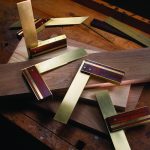We may receive a commission when you use our affiliate links. However, this does not impact our recommendations.
 The editors present some of their favorite designs.
The editors present some of their favorite designs.
Whether we spend most of our time building 18th-century highboys, production cabinetry or toys for our kids and grandchildren, we all build small boxes from time to time. Because we produce so many small offcuts of beautifully grained and highly figured woods, to do otherwise would be a shame. Building small boxes can be the mainstay of our shops – or simply a nice diversion from our usual work.
Often, a simple box can be made in just a few hours, either to break up the work on a more involved project, or simply to test our skills with a miniature masterpiece. Boxes can be customized for display, built to house jewelry, cigars or various keepsakes and collections. Plus, small boxes are lightweight, which makes them a nice respite if we’ve logged hours muscling larger timbers around the shop.
Most every woodworker has at least one go-to box design that he or she builds from time to time. And we could all use a few more to throw into the mix. What follows are four of our favorite small box designs – one from each of the Popular Woodworking Magazine editors. You’ll find links to SketchUp models of each of these boxes on our web site, but feel free to mix and match our methods, and adapt the designs to suit. Building boxes of any shape, style and size presents a great opportunity for skill-building and experimentation.
Strong Miters
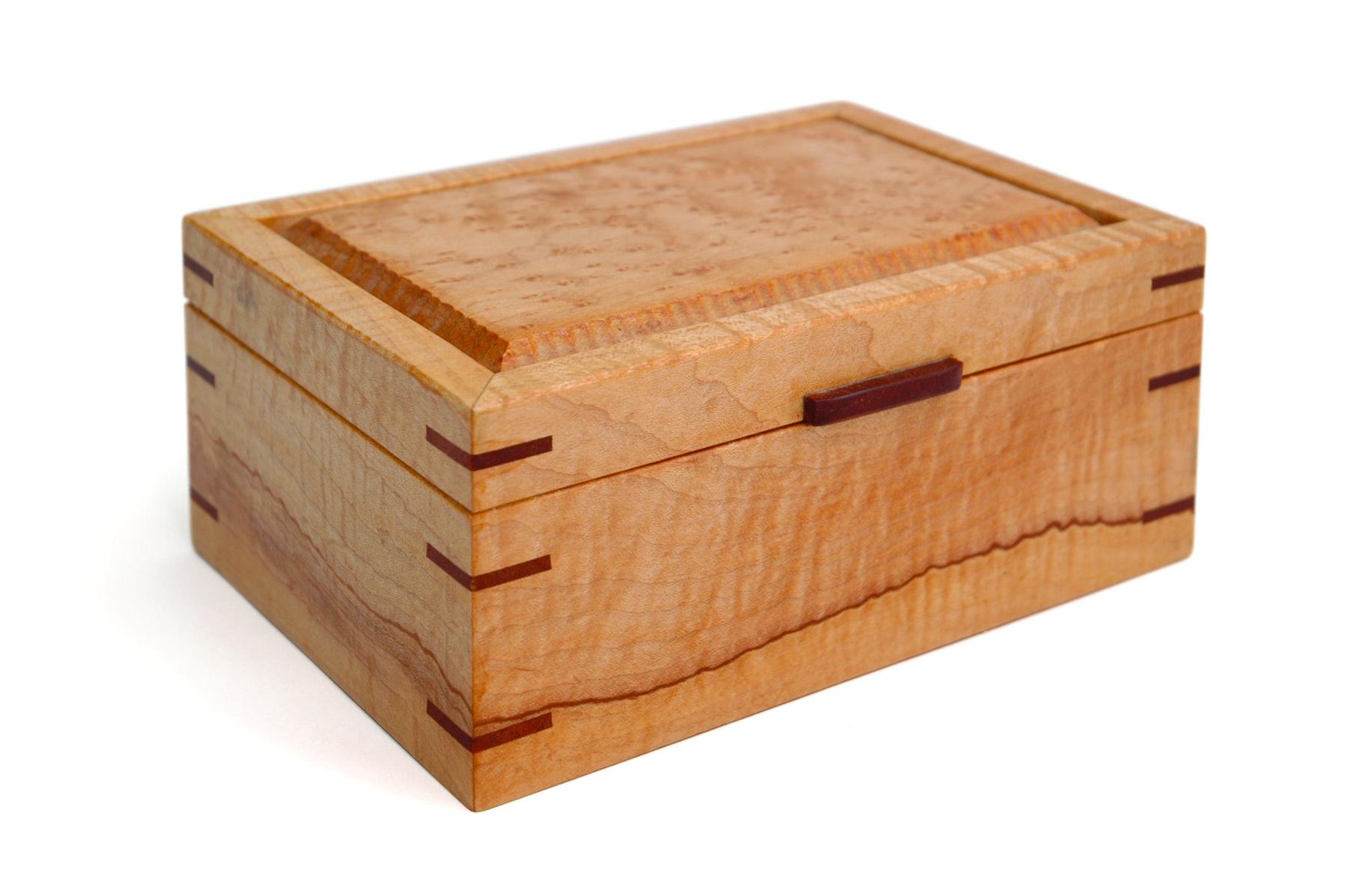
Simple but handmade. Curly maple sides are highlighted with contrasting walnut splines and a textured birdseye top panel.
Almost every woodworker builds some variation of this simple mitered box. My version features corner joints reinforced with keys cut from a contrasting wood, and a raised-panel top that is textured along the edges – it’s just enough handwork to give the box a tactile, personal touch.
Building the box is pretty straightforward. Start with a nice board and base the length and depth of the box off the width of your stock – I usually rely on golden rectangles or simple proportioning ratios: 1:2:3 or 3:6:12. This box is 31⁄4” x 5″ x 8″.
Take the time to make test cuts to ensure that you start with miters that are spot-on so the project will go together easily. So that the grain continues around the corners and wraps all around the box, keep track of the order of the sides by using tape or marking the pieces in order before you make the first cut. Cut the miters and then groove the top and bottom edges of the sides to capture the top and bottom of the box. I texture the edges of the top and finish both the top and bottom before assembly.
I assemble the box by simply taping the outside faces of the corners then spreading glue on the joints. Then I set the top and bottom in place, and roll the box up around them; the tape provides the clamping pressure. After the glue dries I use a keyed miter jig to cut slots in the corners to accept the keys. For more on making and using the splining jig, see Jig Journal on page 60.
Once the keys are installed, I cut the box apart at the table saw. I set the blade so that it’s about 1⁄16” shy of the depth of the sides. After running all four sides through the saw I finish up the cuts with a backsaw.
The finish is one that I picked up from Jeff Jewitt years ago when I was looking at a dozen unfinished boxes that had to be delivered the next day. Jewitt refers to it as his “30-Minute Finish” – wipe on a light coat of linseed oil and rub it until it is dry. Immediately apply a coat of thinned shellac and finish up with a topcoat of wax. It’s quick, easy and it looks good every time. –Matthew Teague
Textured edges on a Raised Panel
My favorite details are easy to create but have a big effect. The texturing on the edges of this raised-panel top falls into that category – at least to my eye.
I start by taking two passes on the table saw. The first is made with the blade angled 45° and the stock flat on the table. The second establishes the tongue and is made with the blade set to 90° and the panel held upright against a tall auxiliary fence.
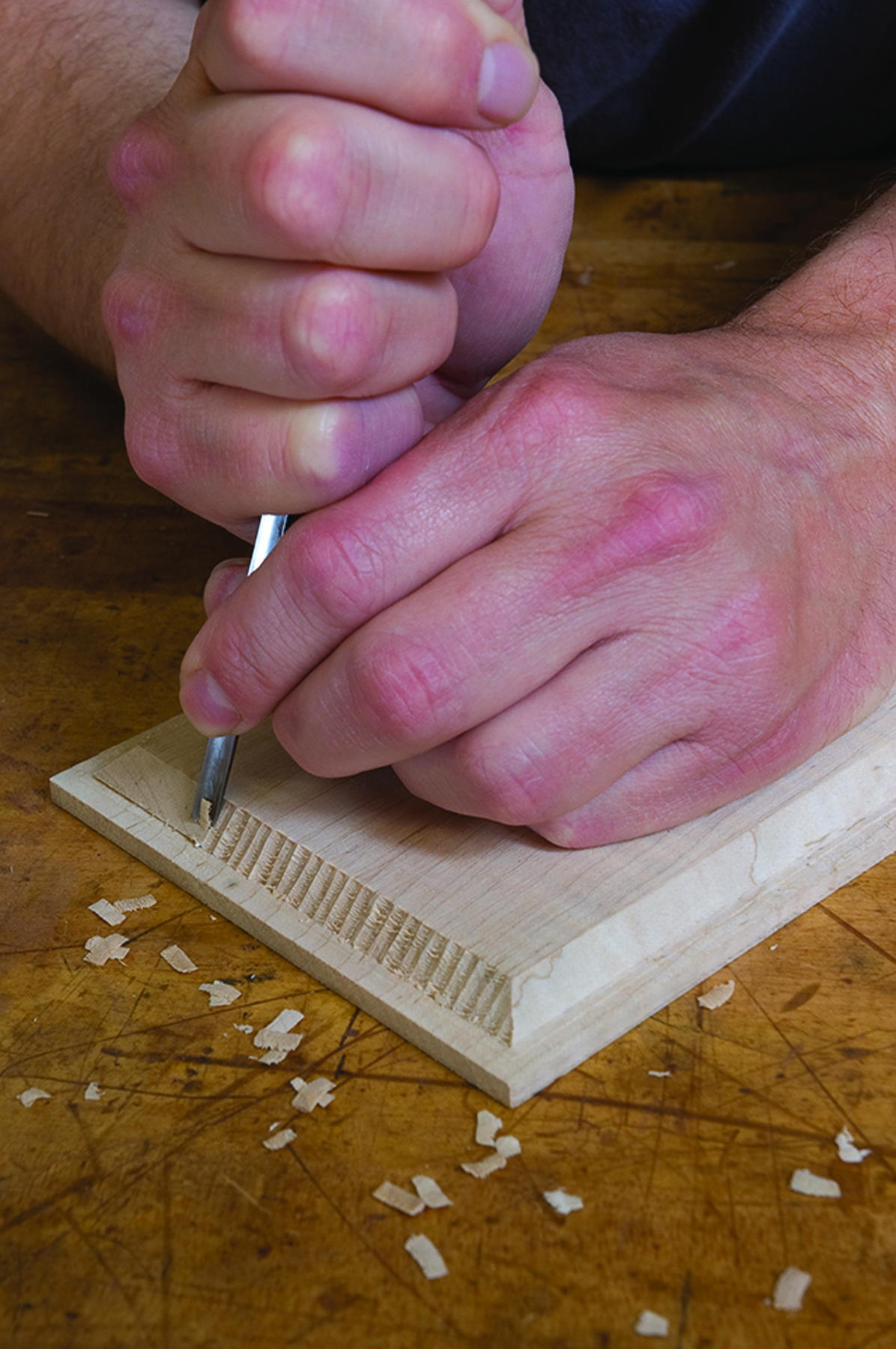
Smooth motion. Start at the field edge; take a light cut down the slope and ease up as you reach the bottom.
The texturing is done with a gouge. Align the edges of the gouge with the top edge of the field and simply press down. Take the cut slow.When you approach the bottom of the angled field resist the urge to lever the gouge and transition to cut the flat tongue; leaving the tongue flat creates a cleaner look where the panel fits into grooves at the top of the box. If you want, you can even leave the tongue 1⁄32“ or so fat until after the carving is done. Then give it one more pass at the table saw to trim away the U-shapes the gouge can create on the tongue.
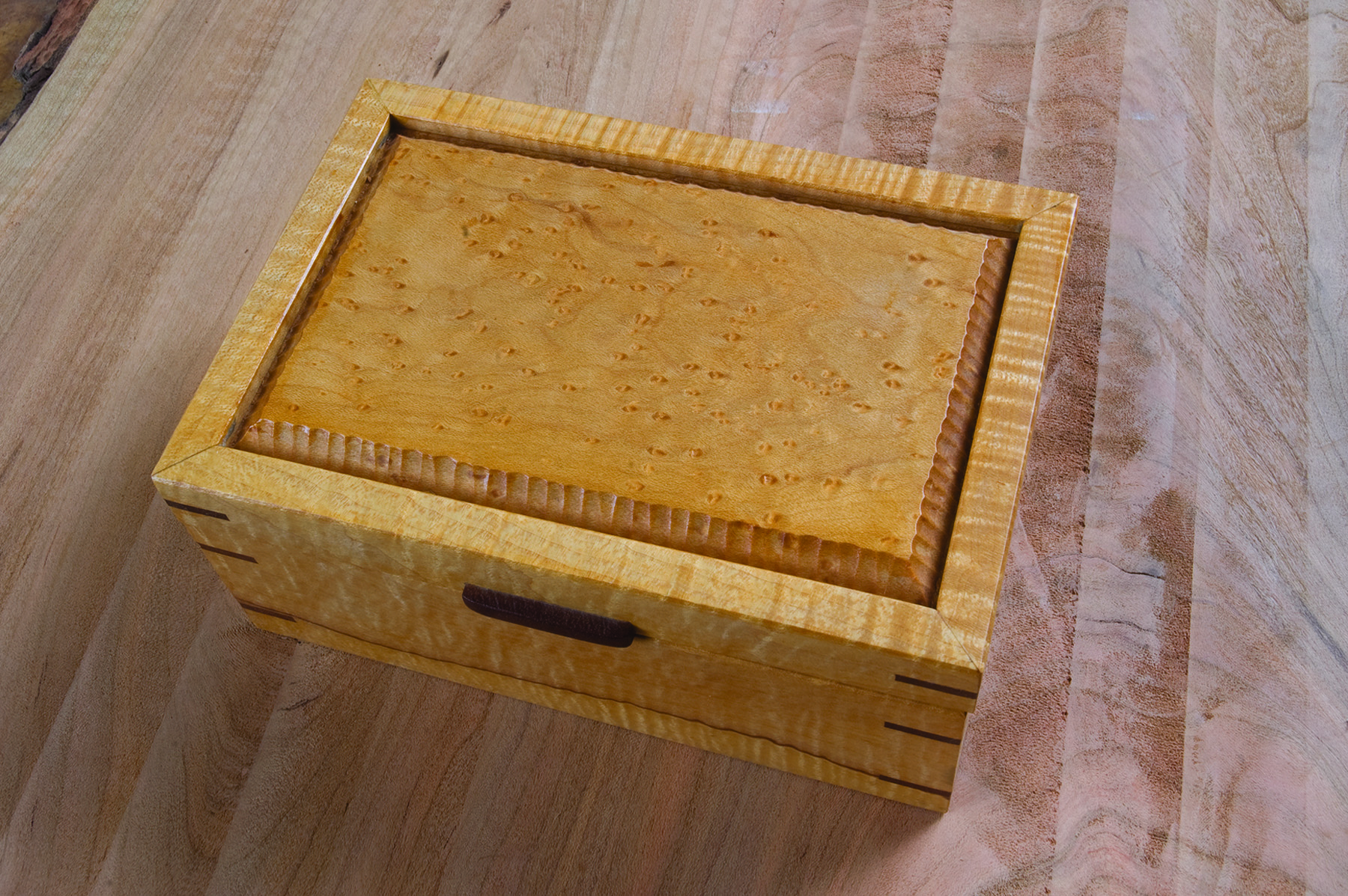
Add depth. Once the finish is applied, color variation creates interesting shadow lines and highlights a texture that begs to be touched.
It takes only a few minutes to get the hang of the process, but it’s worth practicing on scrap. You can also experiment with gouges of different widths and sweeps to achieve different looks. Wider gouges or deeper sweeps often require two lighter passes for each hollow.
— MT
Fit to a Tea
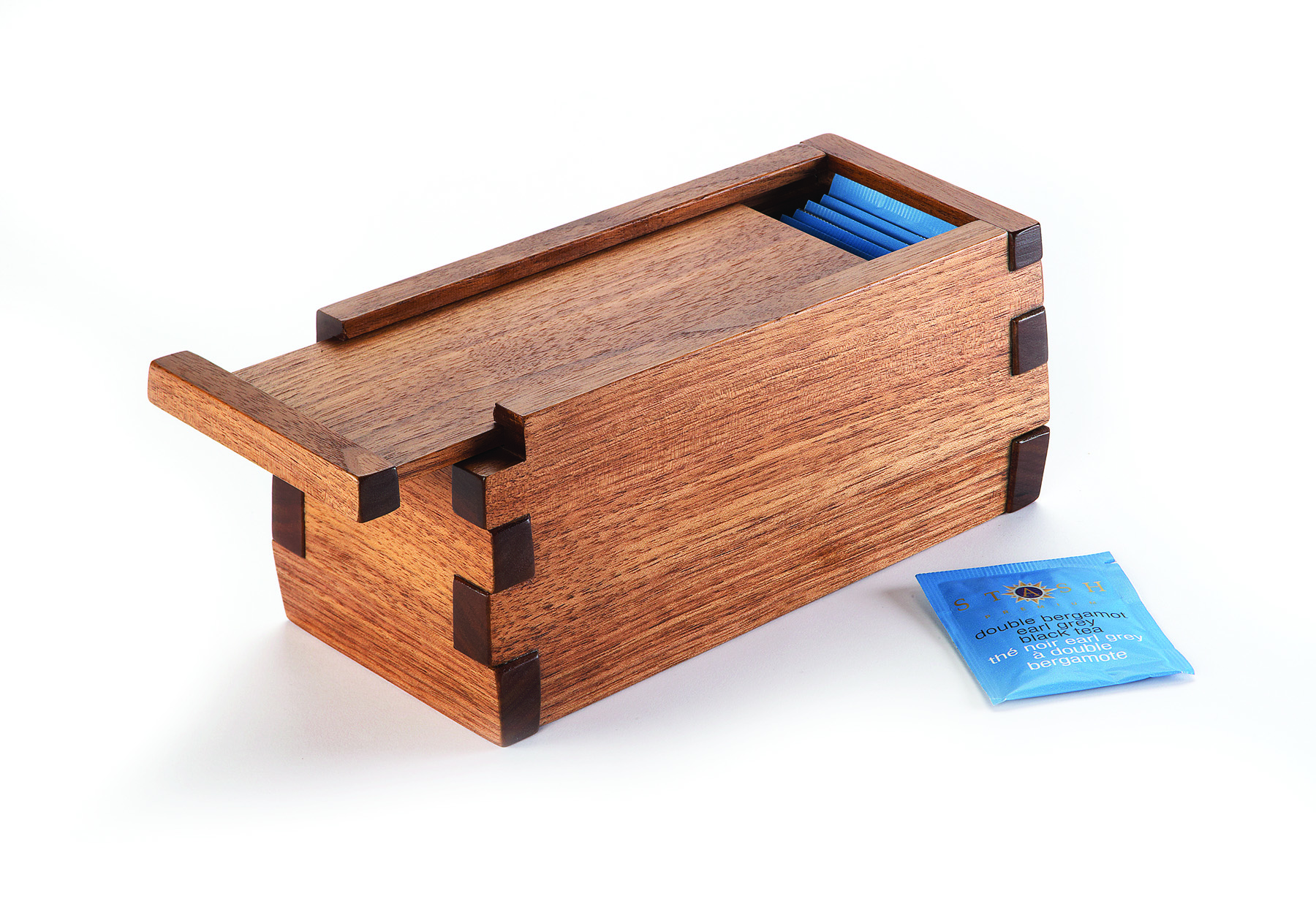
Purpose-built. This box was designed around its contents, and it takes a moment to discover how it opens.
Small boxes can make everyday events special occasions, and they are an excellent way to explore design ideas. I had a purpose in mind when I designed this box: a container for tea bags. But I didn’t want an ordinary box. I was curious about variations of shape and decided to apply a new shape to a familiar joint.
As I started to sketch, I decided to taper the sides in two directions. Finger joints that varied in size seemed a good fit, and leaving the ends of the joints proud of the adjoining surfaces added interest. The top-most finger became a place to locate a sliding lid, and I thought it would be clever to make the thing so that it wasn’t obvious how it opened.
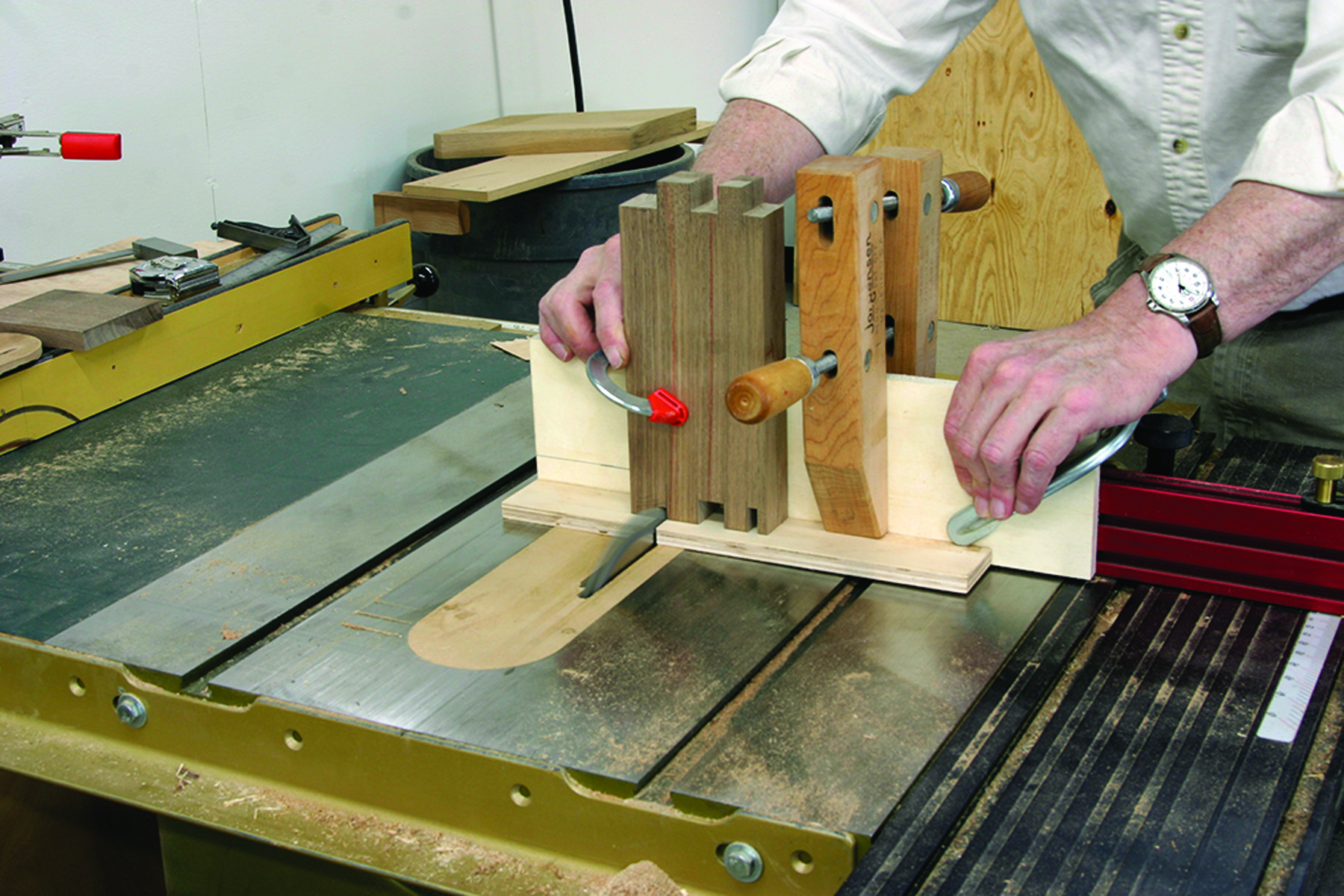
Careful aim. The blade cuts a slot in the bottom of the fixture; use that to line up the cuts before clamping the parts.
I set the dimensions from the inside out, starting with the envelope for our favorite tea and adding 1⁄4” to the width and the height. At the top I added 1⁄2” for the sliding top and some space above it. To keep the piece from looking top-heavy, I set the 1⁄4“-thick bottom in a rabbet (routed after assembly), flush with the bottom.
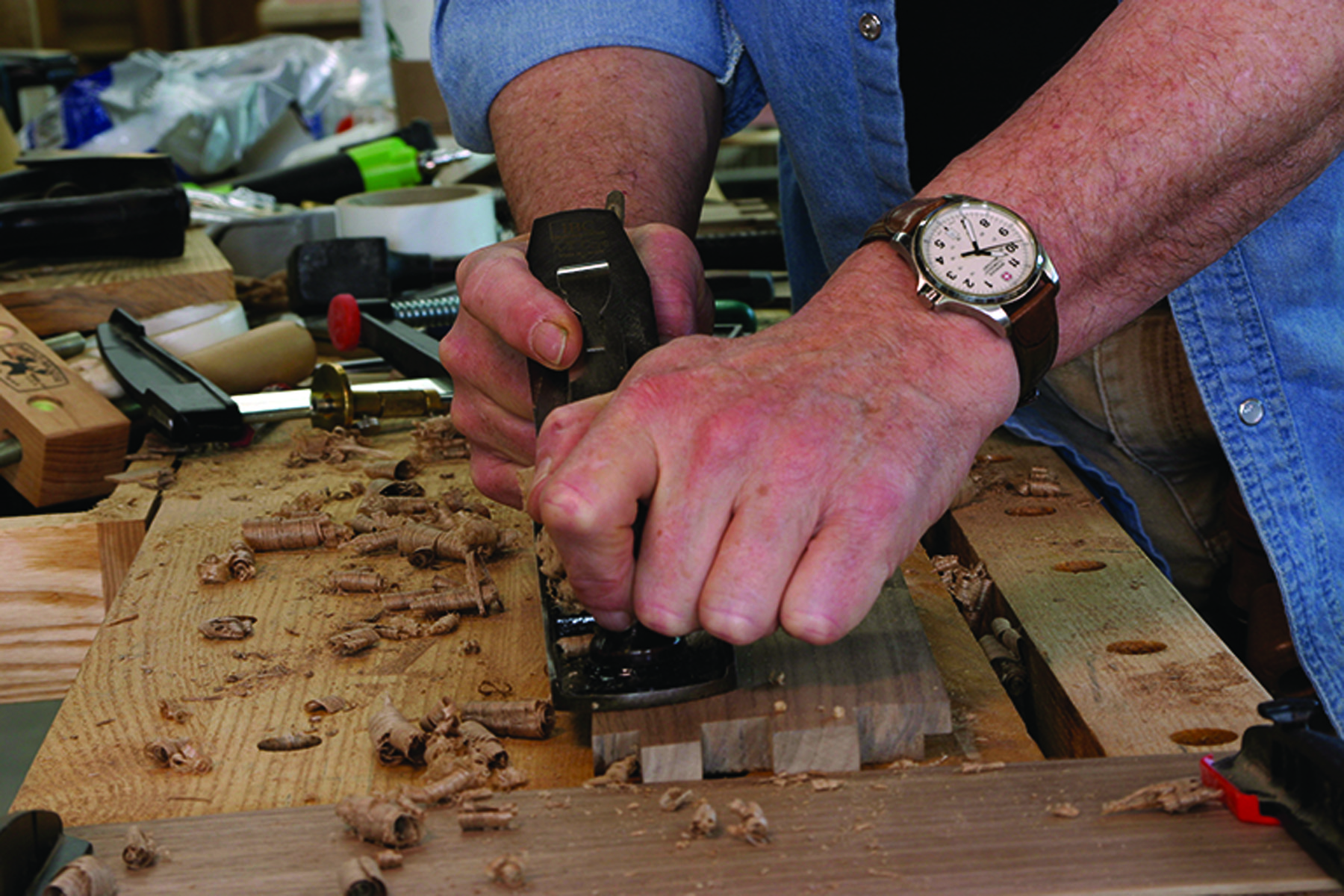
Lean on me. Beveling the sides turns the square and mundane into a lively shape.
Nine inches seemed right for the length. To avoid clunkiness, I chose 5⁄8” as the thickness of the sides and ends, tapering to 1⁄2” at the top and bottom. The tapers begin at the top of the lowest finger.
I milled the parts from a walnut board, keeping the sides and ends in order and resawing the top and bottom. The joints look trickier than they are. They are made while the pieces are square.
After laying out the joints, I attached an L-shaped fixture to the sliding table on the table saw and installed a 1⁄4“-wide blade. I adjusted the height of the blade to the thickness of the pieces plus 1⁄8” from the horizontal part of the fixture. Then I passed that over the blade to leave a slot lined up exactly with the blade’s location.
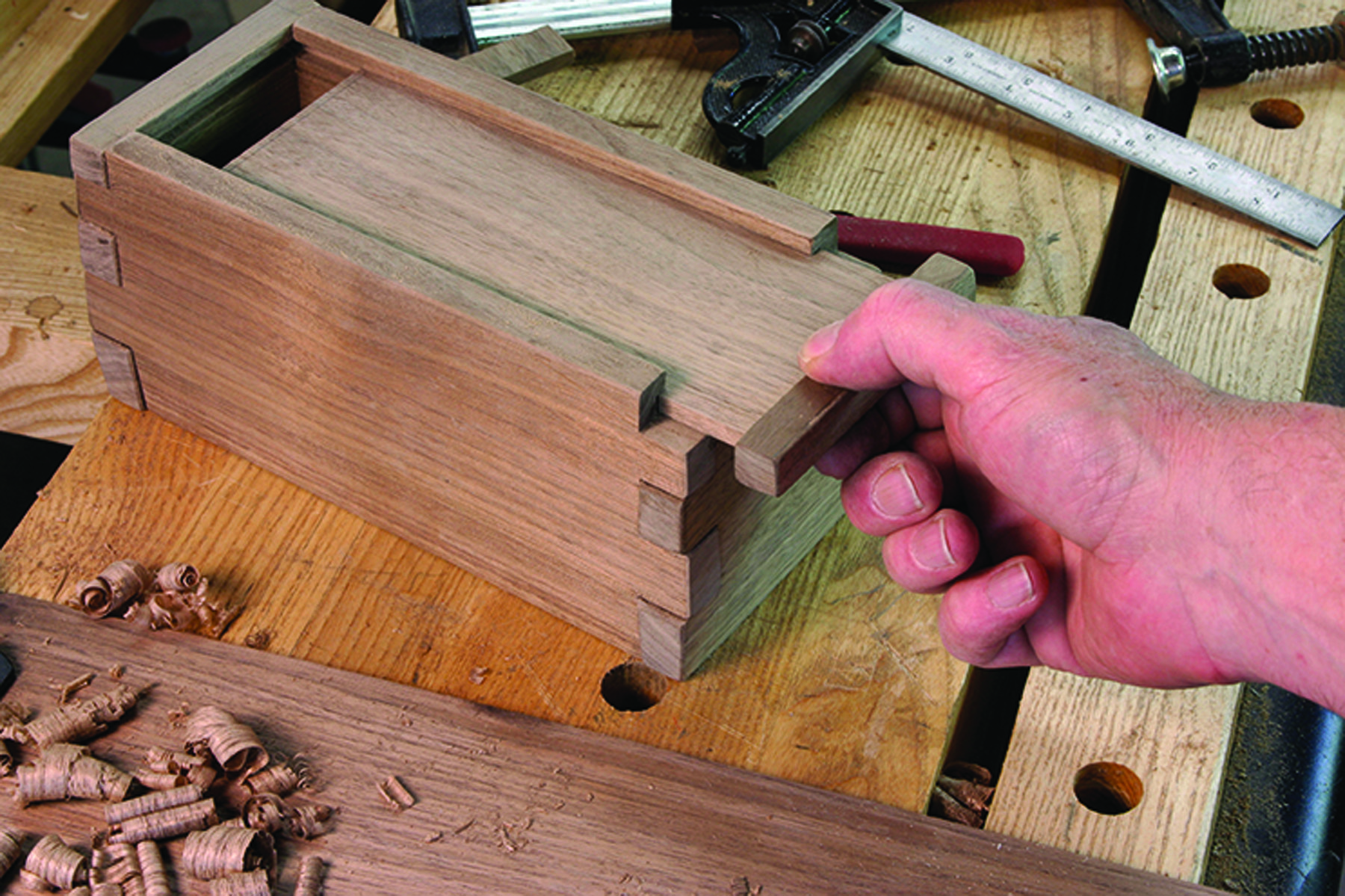
Visual aid. The line of the joint helps to reduce the visibility of the junction of the top and bottom.
That slot allowed me to line up my layout lines and clamp the small parts to the fixture for cutting. I stuck the two short ends together with double-sided tape and after milling the joints, I used the ends to mark the joints on the longer side pieces. I then milled the sides and made a test assembly.
I marked the finger location on the end that opens, and I cut off the top with a dovetail saw to make a clean cut with a narrow kerf. I ran the groove for the top on the router table. The grooves run the length of the sides, but stop within the last finger on the short end. The top panel is glued to a stopped rabbet in the bottom of the pull.
With all the parts cut and fit, I laid out the taper on one of the side pieces. I tilted the table on the band saw to match the angle and removed most of the waste, then planed the surface smooth.
After tapering the sides, I reassembled the box and marked the angles on the end pieces. I placed a straightedge about 1⁄16” thick across the outside of the joints to mark the ends. I made the angled crosscuts on the band saw and cleaned up with a disc sander.
I eased the edges of the exposed joints and glued the box together, then planed a bevel on the bottom of the top panel to allow it to slide, and on the bottom of the pull until it would slide over the top finger with enough resistance to hold the lid in the closed position. The finish is sprayed lacquer. –Robert W. Lang
Period Pretty
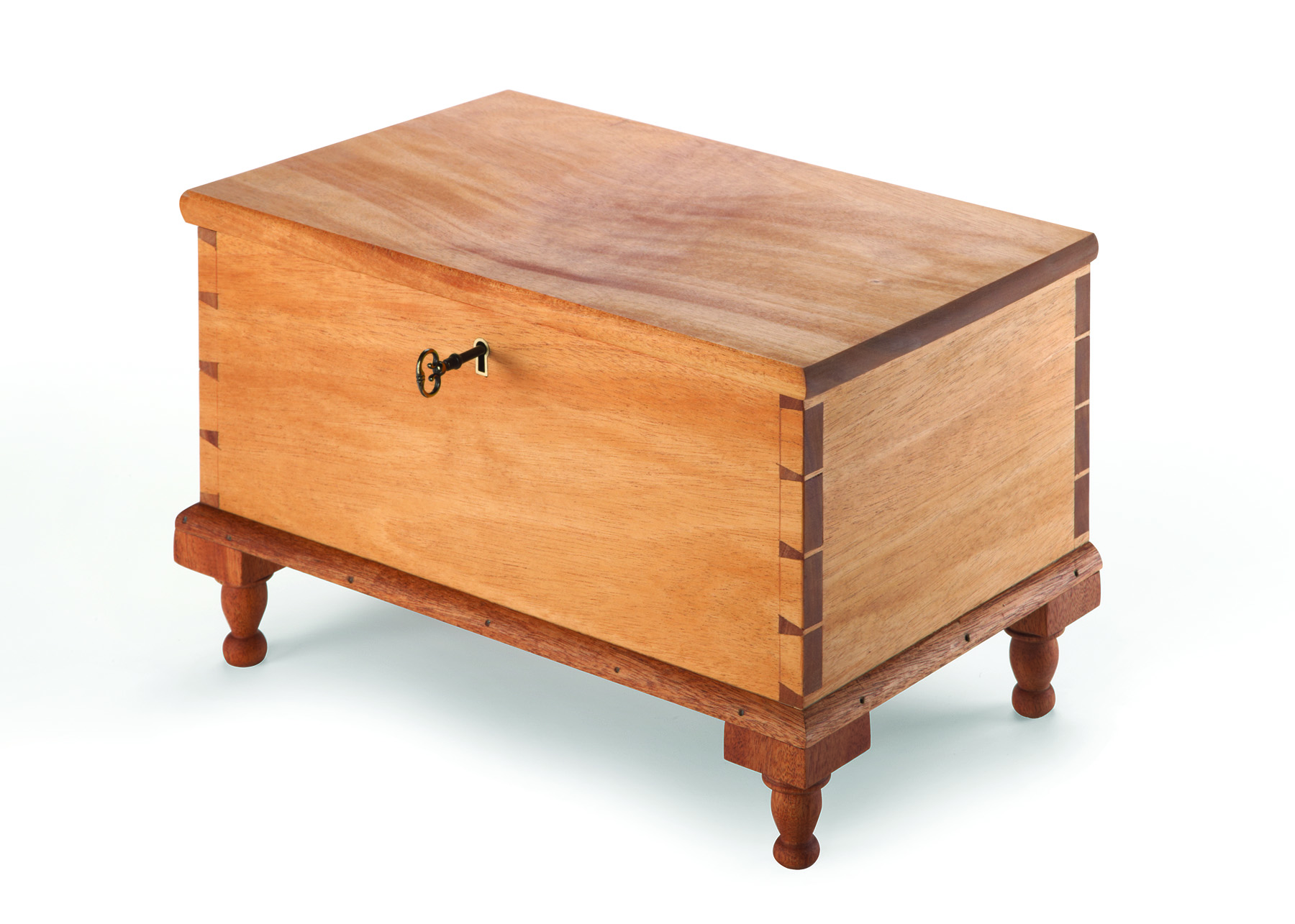
Traditional approach. Period details pop without 300 years of patina to mask them.
I’m typically drawn to period work, from the Renaissance up to the early years of the Victorian era. So when I have to make something – anything – the first place I look is to auction catalogs to see if there’s a period piece that inspires me.
I found a poplar grain-painted chest-on-feet online at Antique Associates at West Townsend (aaawt.com), and adjusted the dimensions a wee bit to better suit my eye and available stock. The sides are 5⁄8” x 6 5⁄8” x 9 1⁄2“; the front and back are 5⁄8” x 6 5⁄8” x 16″; the bottom is 1⁄2” x 9 1⁄2” x 16″; the lid is 3⁄4” x 9 3⁄4” x 15 5⁄8“; and the feet started out as 2”-square, 4 1⁄2“-long blocks.
Construction Details
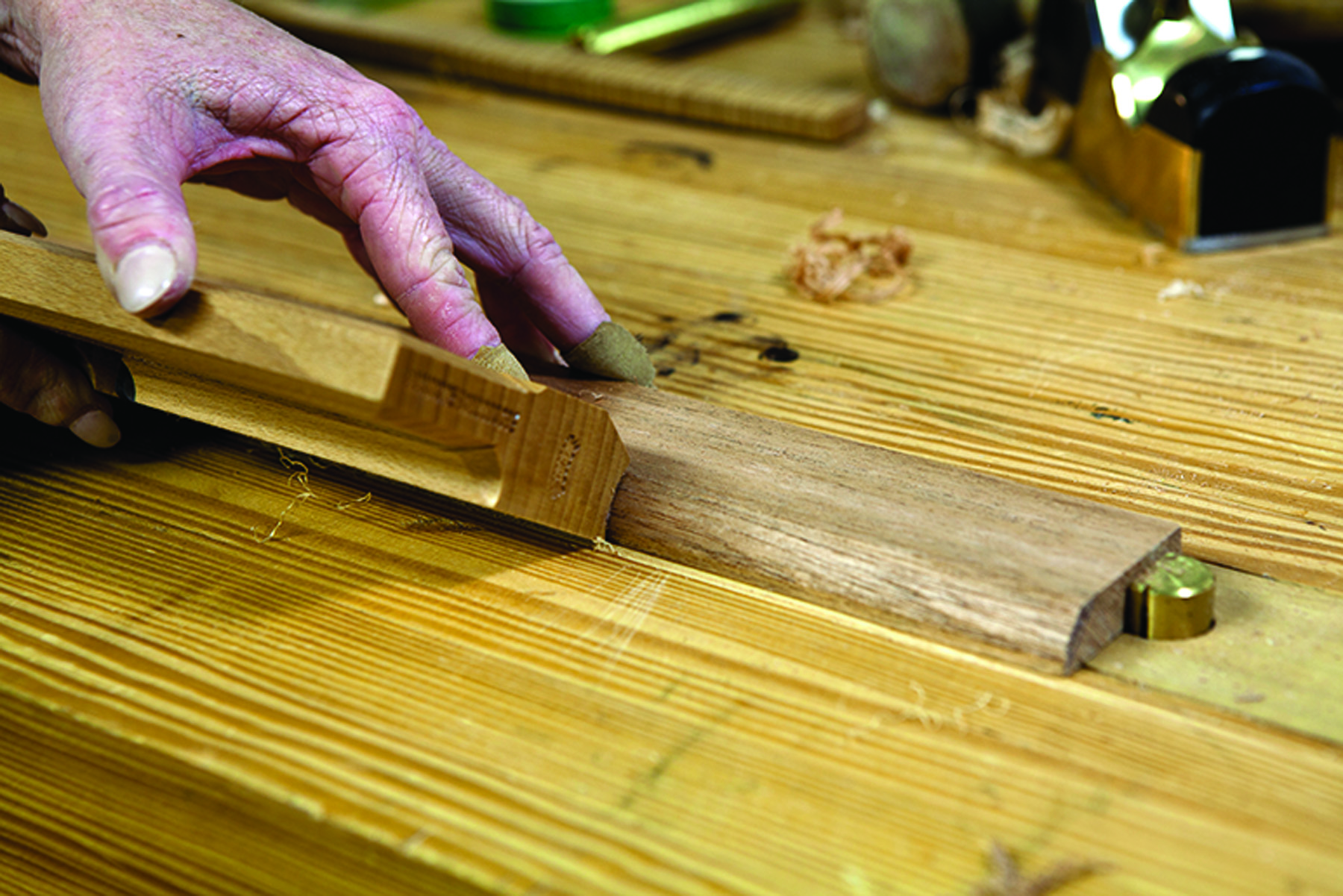
Hand-cut moulding. Cut a chamfer to remove the bulk of the waste and create a flat at the apex of the hollow moulder’s iron, then run the moulding plane along the stock until you’ve created the desired ovolo.
The box is simply dovetailed together. I followed period joiners in leaving my layout lines (if that offends your sensibilities, plane or sand them off after the glue on the dovetails dries). While I don’t typically obsess about perfect spacing of my pins and tails, in this case they’re a major part of the design. So I marked a half-pin 3⁄8” up from the top and bottom on each end, then spaced the full pins at 11⁄2” intervals, and marked 1:8 slopes.
The bottom is then nailed on flush with the box edges using rosehead nails; these have relatively broad, flat heads to securely attach the bottom to the sides.
The lid is simply one piece of mahogany, with the two ends and front edge moulded by hand using a No. 10 hollow. (You can achieve the same look with a router and roundover bit, but I prefer to use moulding planes because there is little cleanup.) I added sliding-dovetail battens to the underside of the top to combat the almost-inevitable cupping.
To cover the seam between the box and the bottom, I used quarter-round moulding cut with a No. 12 hollow. I then wrapped and mitered the corners, added glue to the front piece and front 2″ of the side pieces, and nailed the moulding in place flush with the bottom using standard “fine finish” cut nails.
The Feet
I turned a tenon on the top of each foot, then left a 3⁄4“-long square to form the foot block. The top of the block was undercut starting about 1⁄4” in from the edges, to allow it to easily sit flush with the box bottom. I turned the remainder round, then cut two beads under the block, a vase shape below, and what’s basically a wee bun foot at the bottom.
In a larger piece, the feet would typically be attached to the bottom with wedged through-tenons, but in this case, the tenons interfered with the box walls, so I trimmed the tenons to about 1⁄4” in length, drilled corresponding holes in the bottom of the box bottom, then simply glued the tenons in place.
Hardware
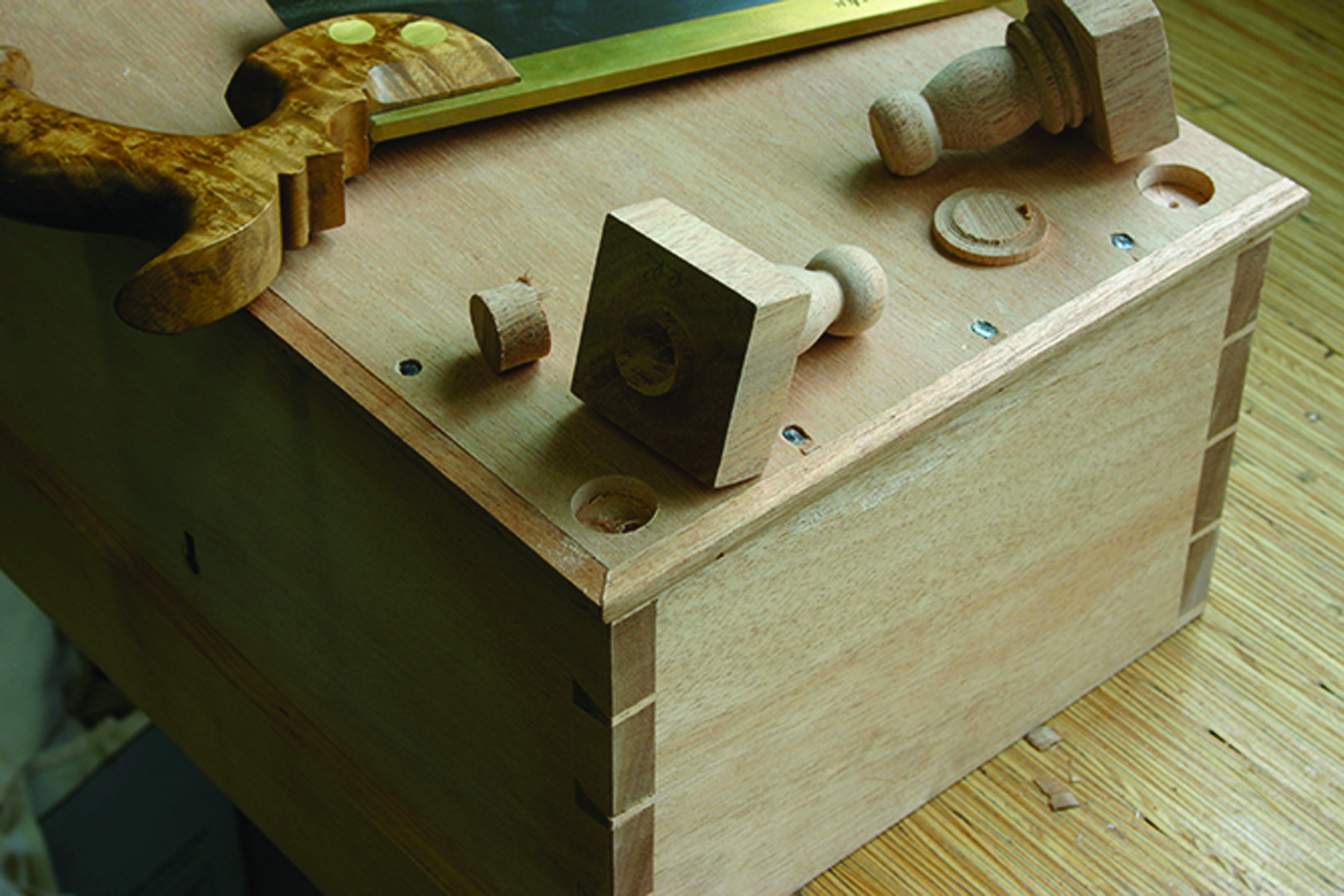
Stub tenons. The feet are installed flush to the box edges with glued-in stub tenons fit into corresponding holes in the box bottom.
The hinges are 6″ iron strap hinges, set in 1⁄4“-deep mortises in the box back to accommodate the knuckle swing. They’re screwed in place with black rosehead screws. I also installed a half-mortise lock and keyhole escutcheon.
After applying a coat of oil/varnish blend, I put the piece in the sun for a touch of tan, then I applied a second coat of oil-varnish blend and buffed on a topcoat of paste wax. –Megan Fitzpatrick
Turned & Delicate
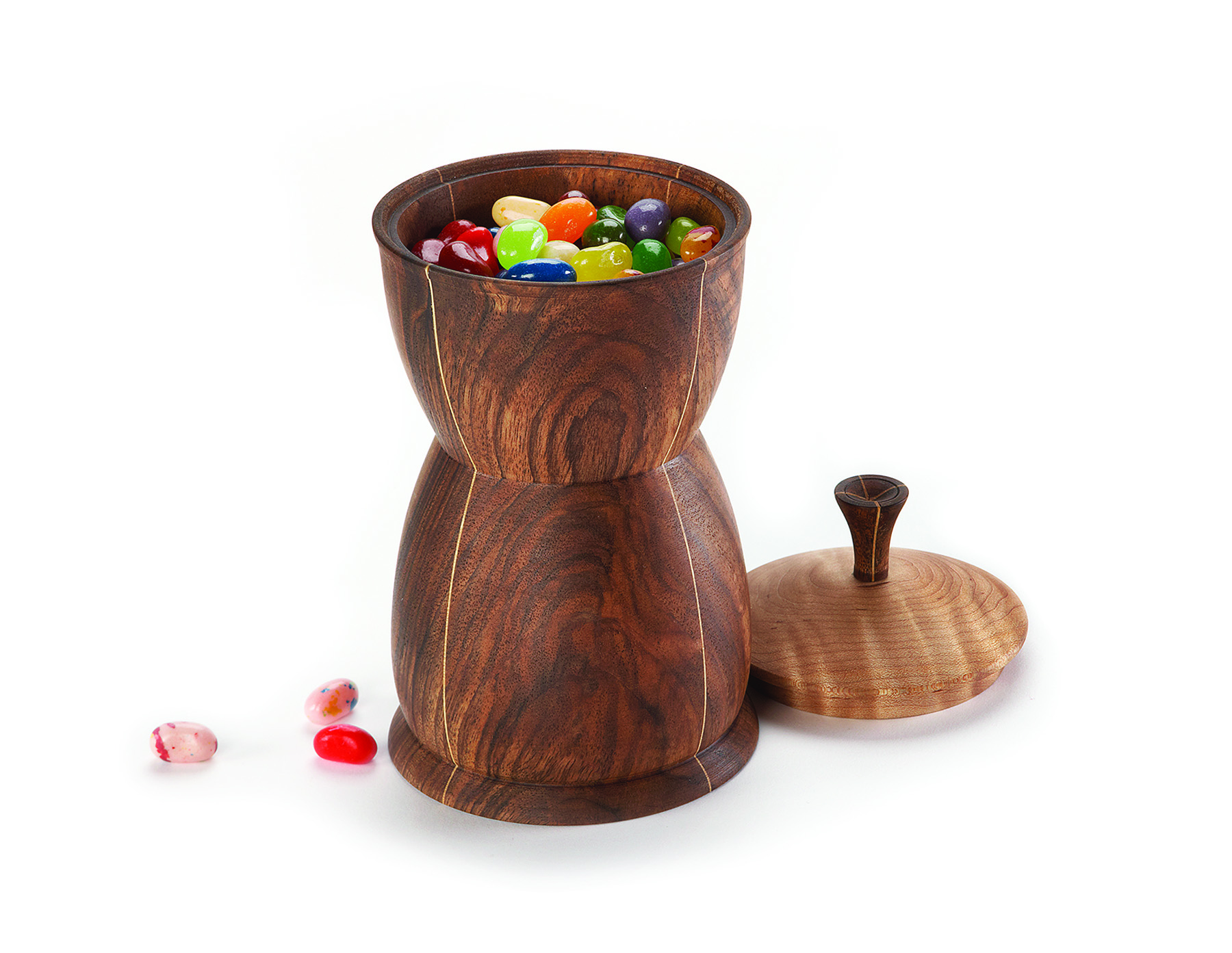
Boxes can be round, too! Turning boxes on a lathe can produce many varied shapes – and turned boxes are usually quick and easy to make.
A box is a popular item in the world of turning. And as for our woodworking brethren in the “square and parallel” universe, the inspiration for a box may often begin with a small piece of special wood.
And so it was with my box project. I’d been hoarding a small chunk of walnut for several years. It was just thick enough at 4″ square and about 8″ long.
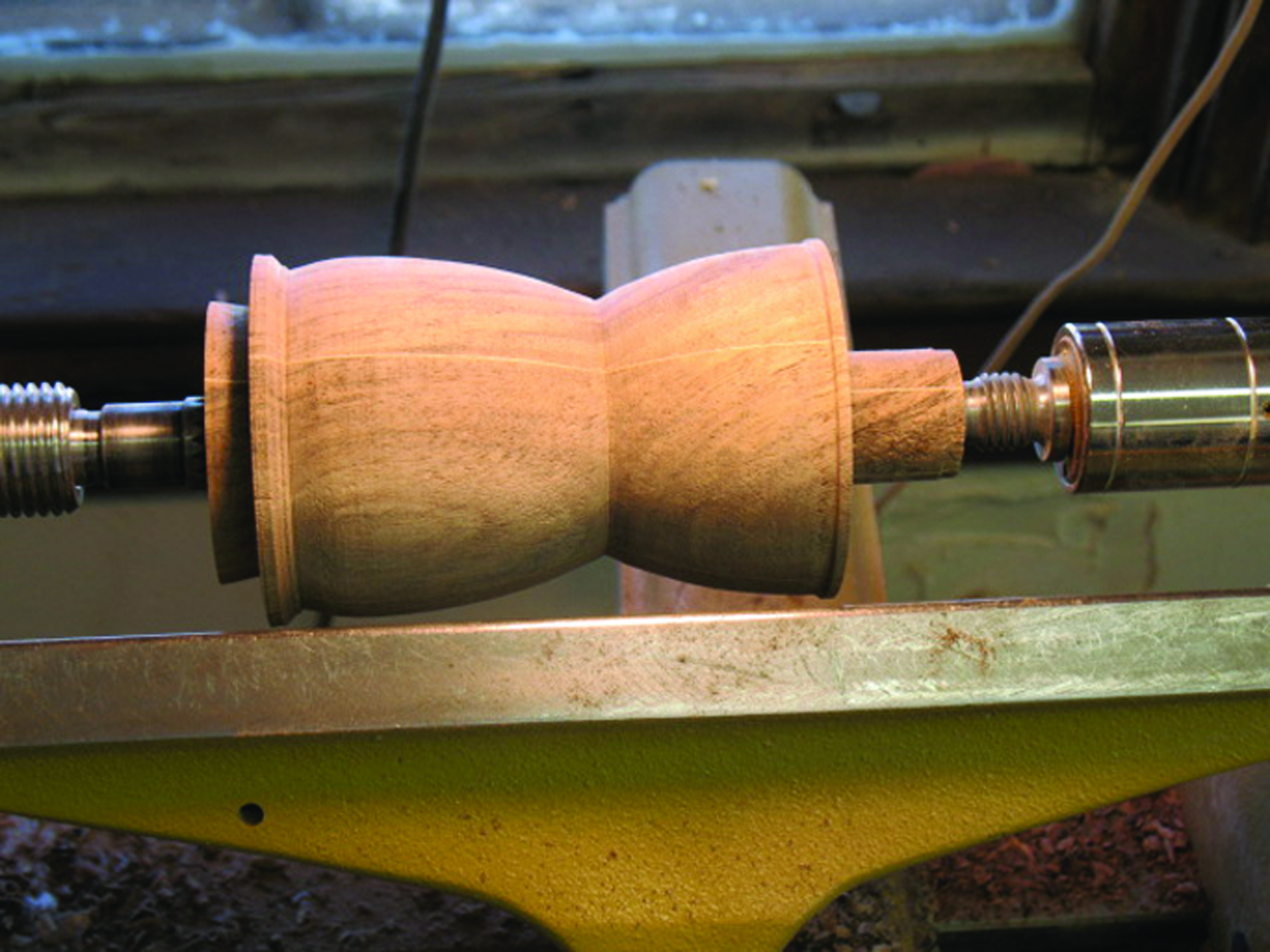
Turn the outside. The first step is turning the outside shape with the blank mounted between a spur center and a live center in the tailstock.
And like so many works that come off my lathe, the wood dimensions suggest the overall shape and size of the piece. I decided to add the delicate and contrasting maple detail for ornamentation. The vertical lines were added by sawing the block in half, gluing it back together with a piece of maple veneer between, letting it dry, then repeating the process so the veneer formed four quarters within the block.
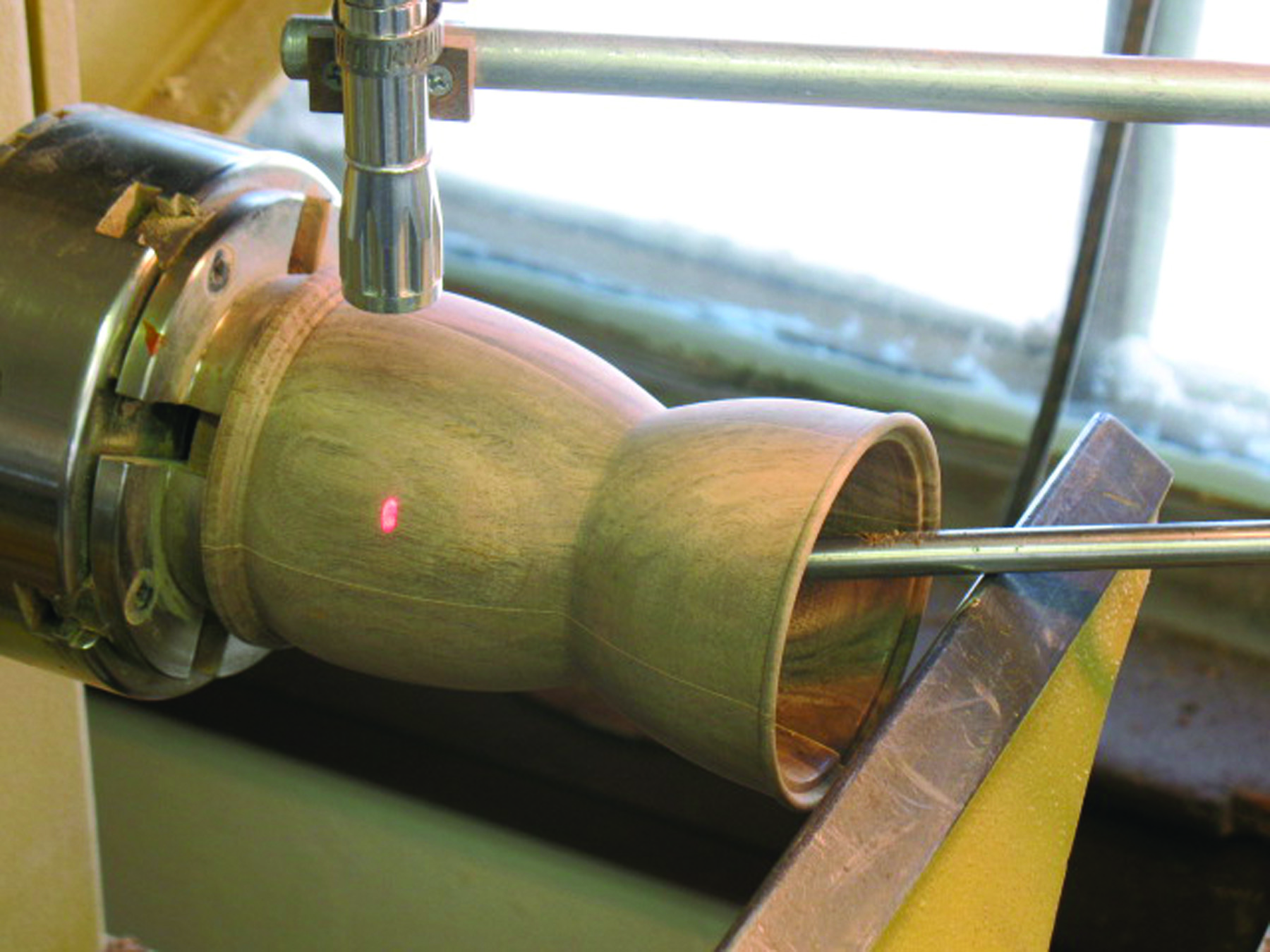
Hollow the inside. A laser (note the red spot on the side) tracks the location of the tool deep inside the box and makes it simple to hollow.
To turn the walnut portion, including the knob on the figured maple lid, I formed the outside shape with the blank mounted between a spur drive center and live tail center. Then I added a dovetailed tenon at the base so I could change workholding to a four-jaw scroll chuck. That allowed me to hollow the inside.
With the base in the chuck, I finished up the knob and included a small tenon for gluing it into the maple lid later. Then I parted the knob off.
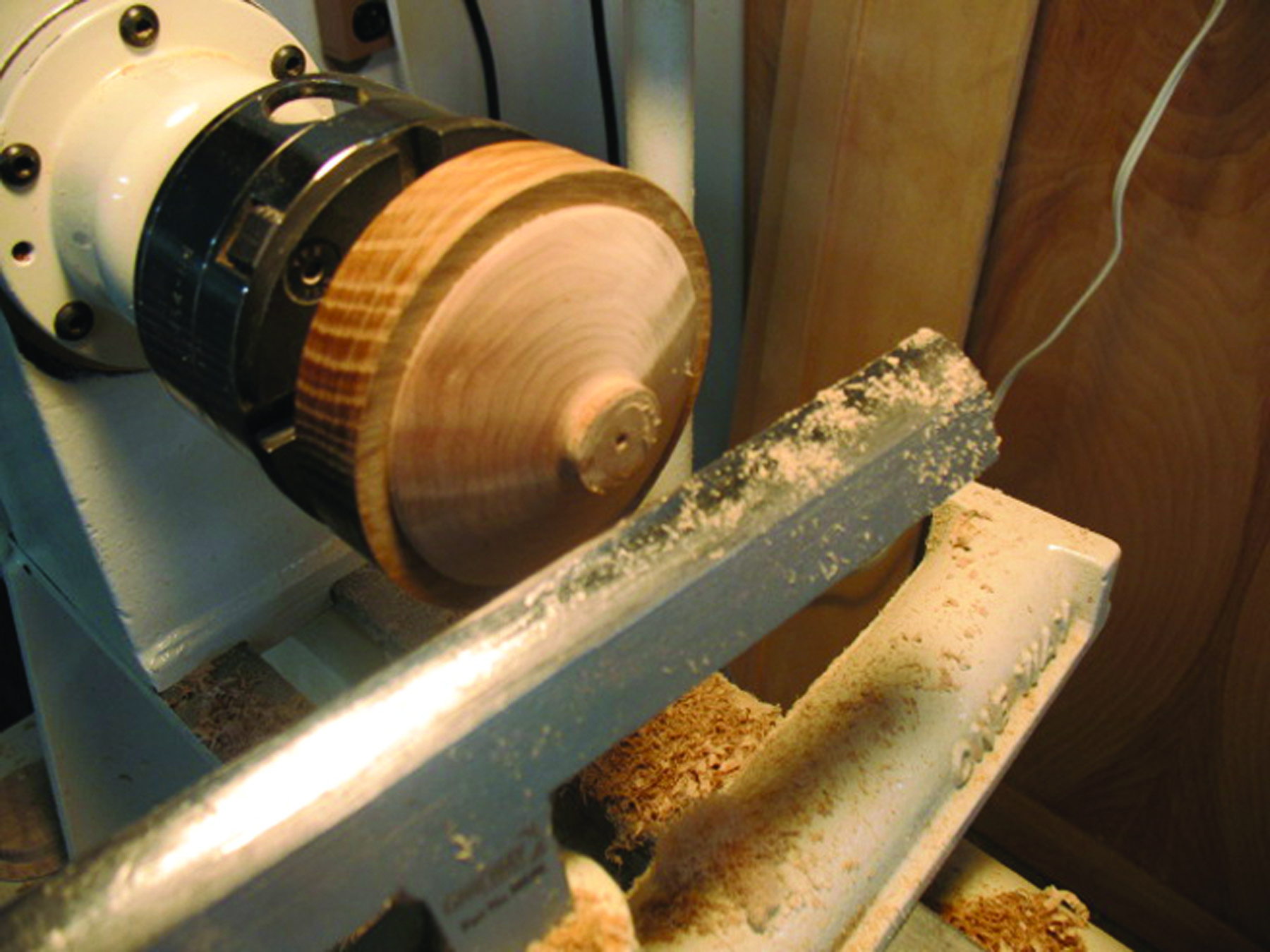
All jammed up. Once the lid’s inside is done, the lid is mounted in a jam chuck to turn the outside.
Hollowing the upper portion of the base was easy because the mouth is wide and the outside shape is easy to follow; below the waist it’s tricker. That’s why I switched to a setup that feels a bit like cheating – a rig that has the hollowing tool set up with a small laser attached above it. You simply set the laser to project a light just off the tip of the cutting edge. When the laser beam starts to trail off the outside edge of the work, you know you’ve hollowed to the wall thickness you want. For this box, that’s about 3⁄16“.
I sanded the piece on the lathe from #120 up to #320 grit.
The lid is made in much the same way, starting with the work between centers. In this case, I formed the inside shape, a center dome area with a lip cut at the outside perimeter. But instead of changing to the four-jaw chuck, I made what’s called a jam chuck. A jam chuck is a piece of waste wood slightly hollowed to the exact size of the step in the lid’s lip. The lid is held in the jam chuck by virtue a tight friction fit.
The outer domed shape of the lid was quickly turned and sanded, then I drilled a hole in the center for the knob’s tenon. After gluing the knob in place, I finished the box with a couple applications of boiled linseed oil. –Steve Shanesy
Further reading: View a series of step photos that show how to assemble a solid box then cut the top off using the table saw.
Here are some supplies and tools we find essential in our everyday work around the shop. We may receive a commission from sales referred by our links; however, we have carefully selected these products for their usefulness and quality.



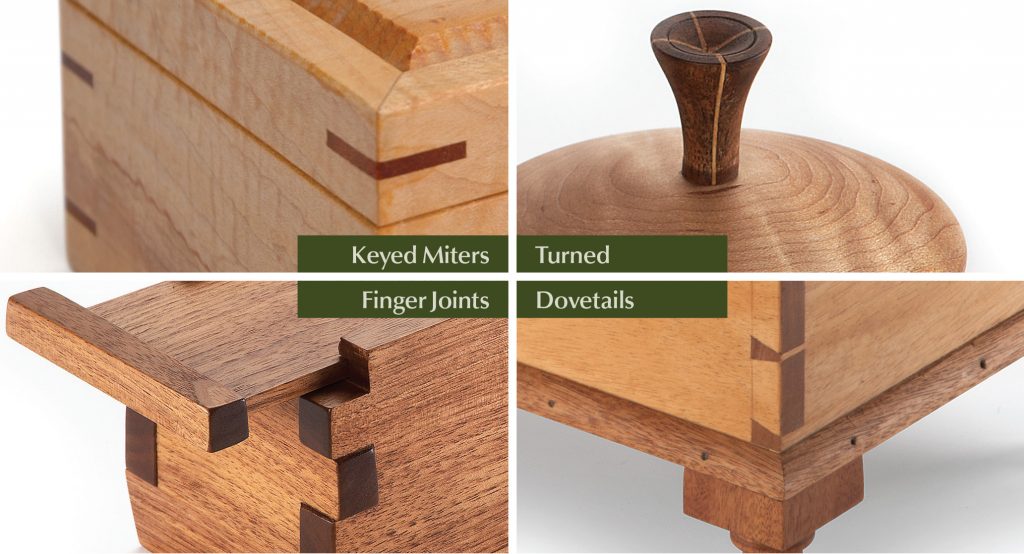 The editors present some of their favorite designs.
The editors present some of their favorite designs.




